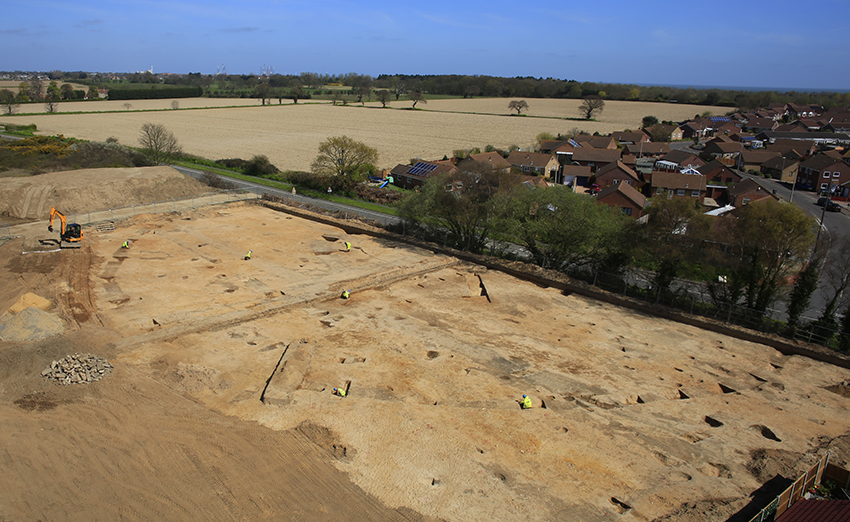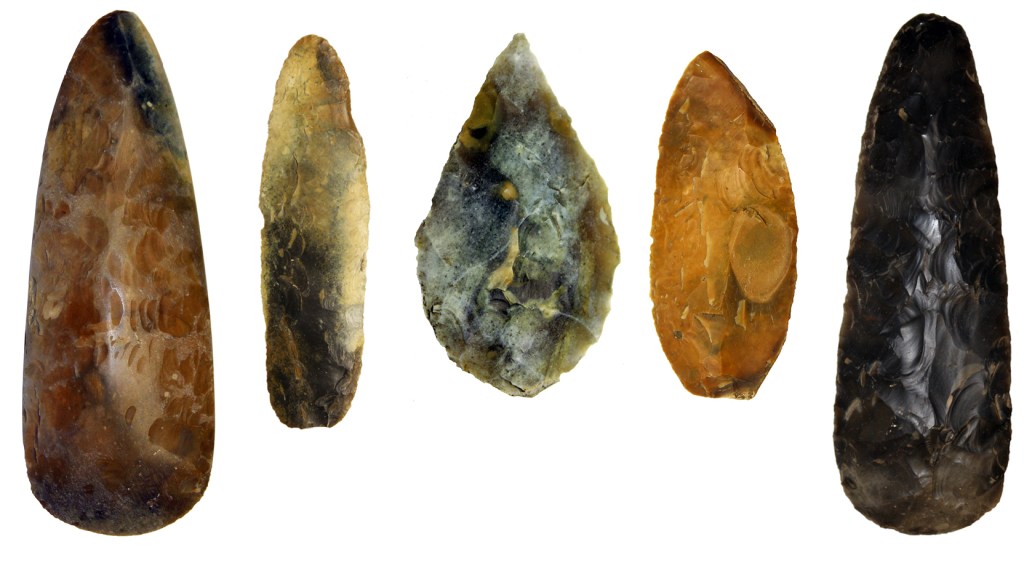The ongoing excavations at Cholsey have been nothing if not engaging. Even though it is clear that we are away from any areas of occupation, this managed landscape was obviously of importance with offerings being given to the Gods.
Read MoreOur nationally significant site at Hopton-on-Sea, Norfolk, features in a fascinating article by Mike Pitts in the latest (May/June) edition of British Archaeology. The site lay in an area of extensive cropmarks, previously studied as part of the National Mapping Program (NMP) of the Norfolk Coastal Zone. Our findings brought details of this study into sharper focus, revealing a ceremonial landscape in use for at least two or three millennia.

“We excavate hundreds of sites every year, and are constantly reminded how little we still really know about our country’s past,” Mark Hinman, regional manager at PCA, told British Archaeology. “But even with that background, this one is special.”
The geographic and topographic position of the site are striking and particularly relevant to the results of our excavations. The site lies on the former ‘Isle of Lothingland’, with the River Yare to the north and the River Waveney to the west and south, on a south facing slope overlooking a former spring. Such locations are known to have been favoured places for settlement since the Neolithic period.
One of the most striking features of the site was a 30m diameter Neolithic ring ditch, dated using Optically Stimulated Luminescence (OSL) to 3225BC +/- 320 years, with a larger 80m diameter outer ring added in the Late Bronze Age. Various finds, including a jet stud and beaker pottery, hint at funerary activity in the earlier history of the monument and cremations demonstrate this tradition continued through the Middle to Late Bronze Age.

There was a hiatus in activity until the mid-1st Century AD, when the landscaped was redefined by a series of Roman field systems, trackways and rural farmsteads, which may initially have been laid out by the army on a surveyed grid, traces of which survive as cropmarks. These cropmarks had previously been discussed as part of the NMP, who considered the possibility they represented both prehistoric and Roman farming, but excavations have shown them to be exclusively Early Roman in date.
A rare gladius handguard plate from a military issue sword, thought to have been used in the invasion of Britain, suggests the founders of the settlement had links with the army. This rare find was recovered with an unusual pottery assemblage from one of the wells on the farm. The farmsteads went out of use by the mid 2nd Century AD, but the wider agricultural use of the landscape appears to have continued into the 3rd Century. This follows a local pattern previously recognised in North Norfolk.
We’ve excavated large areas of land ahead of redevelopment by Cripps Developments. The latest phase of work has shown that a presumed Bronze Age barrow is actually Roman, dating to the same period as the settlement. It may prove to be a temple, echoing the circular, ceremonial Bronze Age monument that dominated the landscape for so long.
The Study Group for Roman Pottery are celebrating their 50th anniversary with a FREE two-day conference, open to members and non-members.
Read MoreThis week at Cholsey our team have continued to be fascinated and surprised by the artefactual material revealed during our investigations. Following on from those beautiful worked flints and the dog burial, this week we have uncovered this rather stunning Bronze Age food storage jar which had been deliberately buried in the centre of the main droveway that dominates the area. Once off-site we can begin to excavate its contents in our labs to see what it was filled with. This will hopefully give further insight into this apparent votive offering, but for now you will just have to content yourselves with how beautiful an object the jar and its decoration is in its own right!
Read MoreAs we mentioned in our first update, a cache of worked flints was discovered in one of the small pits that dot the excavation site in Cholsey, Oxfordshire. This was excavated by Sean Rice from our Warwick office. In amongst the more general cache were four lovely scrapers, two of which you can see here, but by far the star of the show is this lovely leaf shaped arrowhead. These delicate tools are frequently found broken but it is rare to find one in such lovely condition, so well done Sean.
Read MoreThe next LAMAS online lecture is on Tuesday 13th April at 6.30pm when Joe Brooks will present the findings of Pre-Construct Archaeology’s work within the former Adrian Boult Music Centre at Westminster School, including extensive evidence of the monastic Great Kitchen of Westminster Abbey – see image below – and the later use of the site for dwellings.
Read MoreThe excavations at Cholsey, Oxfordshire are truly a joint PCA effort with staff from the Cambridge, London and Warwick offices all working as one happy team to help discover the exciting Prehistoric past of the area.
Read MoreWe have begun excavations at Cholsey, near Wallingford in Oxfordshire, on behalf of Bellway Homes Limited. These exciting investigations have been designed to look at how the landscape was used in Prehistory, with the geophysical survey already providing hints at the sorts of features we might expect to find.
Read More






